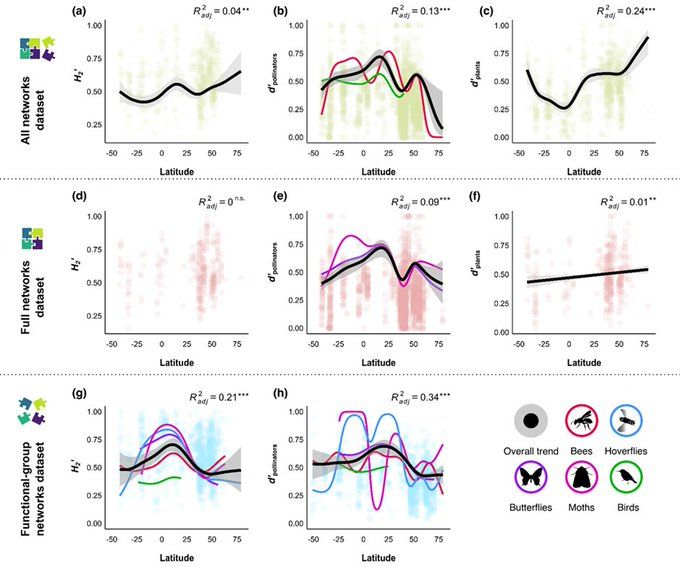
@sciencecharles.bsky.social and Biology Centre Czech Academy of Science; head of Insect Community Ecology Group (https://www.insect-communities.cz/)
@fpgaona1.bsky.social has just been published in the African Journal of Ecology!
Elevational patterns in two groups of micromoths (#Lepidoptera: Pterophoridae, Alucitidae) in tropical forests of Mount Cameroon
onlinelibrary.wiley.com/doi/10.1111/...



@fpgaona1.bsky.social has just been published in the African Journal of Ecology!
Elevational patterns in two groups of micromoths (#Lepidoptera: Pterophoridae, Alucitidae) in tropical forests of Mount Cameroon
onlinelibrary.wiley.com/doi/10.1111/...
This synthesis was possible only through a global collaboration of 140+ researchers...

This synthesis was possible only through a global collaboration of 140+ researchers...
Plants and pollinators show contrasting, non-linear trends, and climate, not latitude, is the key driver. Temperature, rainfall, and seasonality explain global variation in interaction specialisation.


Plants and pollinators show contrasting, non-linear trends, and climate, not latitude, is the key driver. Temperature, rainfall, and seasonality explain global variation in interaction specialisation.
“Climate-driven specialisation in plant–pollinator networks peaks outside the tropics”
Testing the long-debated latitudinal specialisation gradient using >3,400 quantitative networks (>110,000 interactions). Led by @saileesakhalkar.bsky.social and myself ☺️
doi.org/10.1101/2025...

“Climate-driven specialisation in plant–pollinator networks peaks outside the tropics”
Testing the long-debated latitudinal specialisation gradient using >3,400 quantitative networks (>110,000 interactions). Led by @saileesakhalkar.bsky.social and myself ☺️
doi.org/10.1101/2025...


